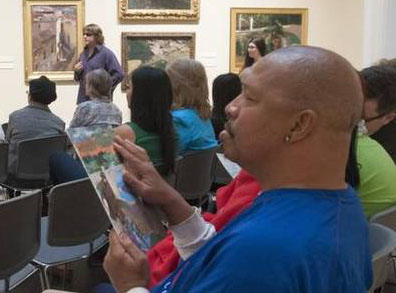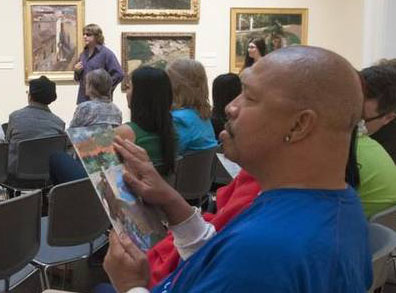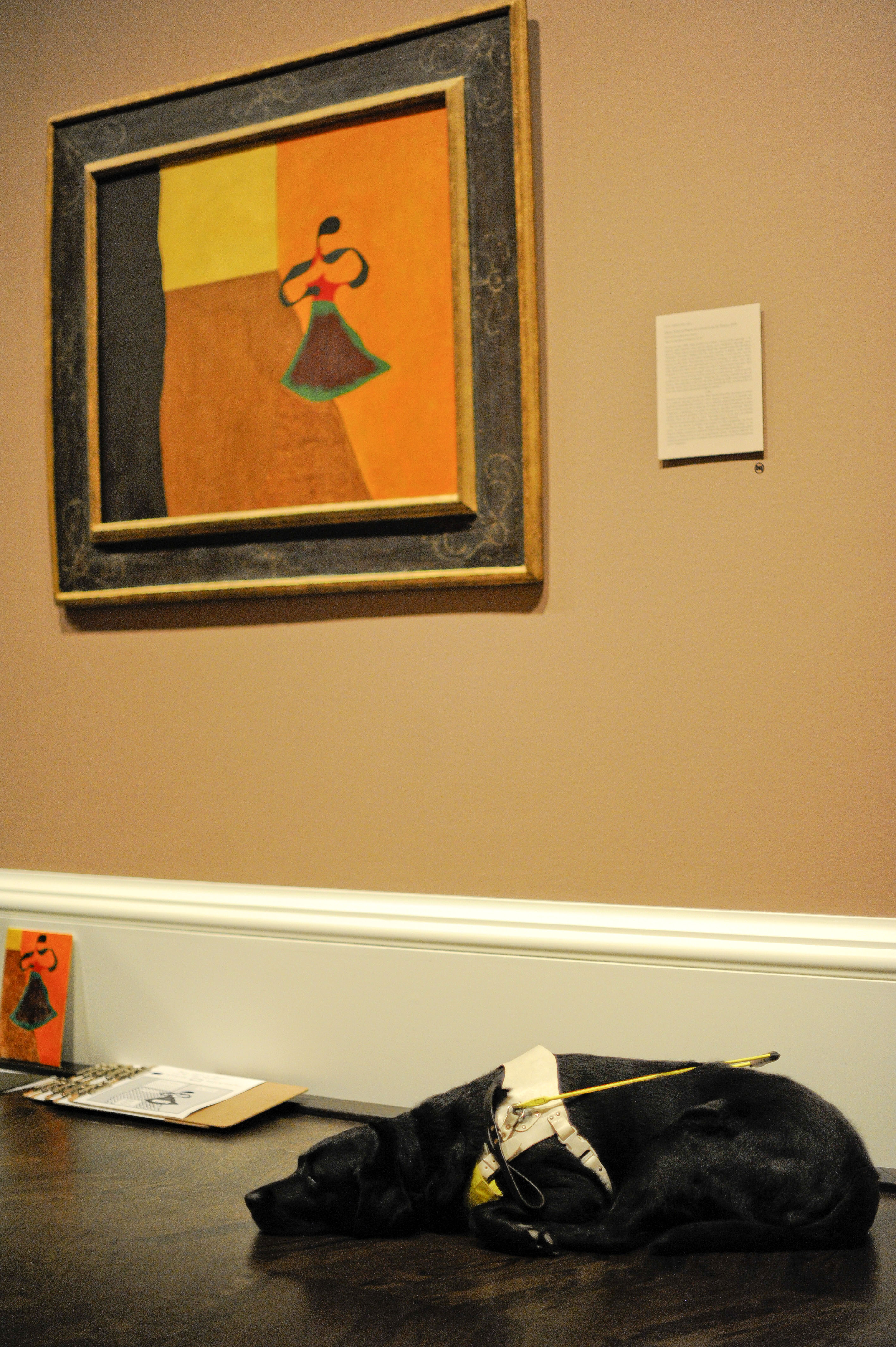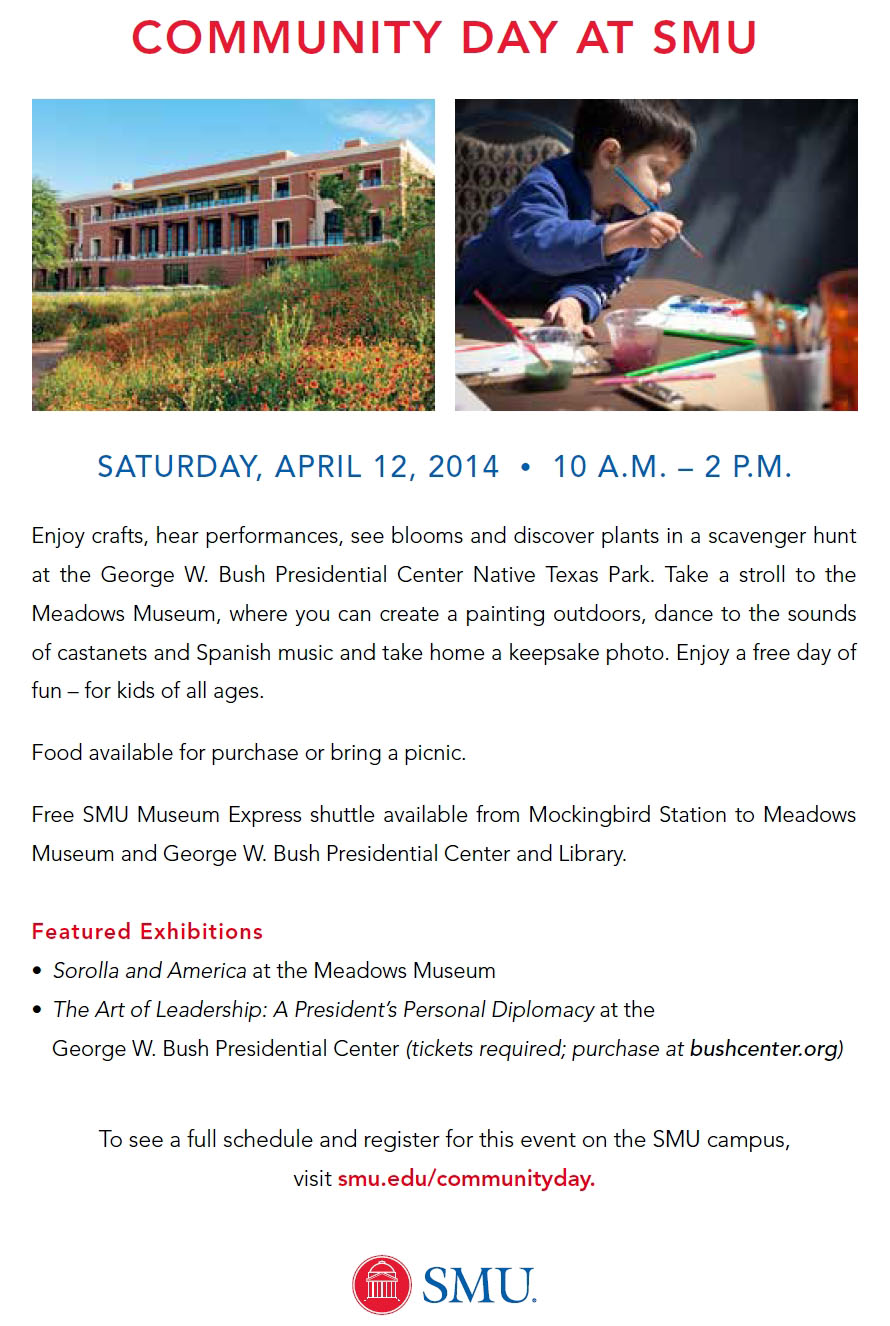SMU’s Meadows Museum takes art to the blind — and beyond
A Meadows Museum program is on the cutting edge of reaching out to the visually impaired.

By MARC RAMIREZ
Staff Writer
 Bobby Jackson of Fort Worth (Photo by Rex C. Curry) |
With their galleries full of paintings and sculptures, museums are a treat for the eyes. So after suffering optic nerve damage, Bobby Jackson of Fort Worth wasn’t sure he’d ever visit one again.
But here the former forklift operator was at Southern Methodist University’s Meadows Museum, taking in some of the museum’s extensive Spanish collection using senses other than sight — tracing tactile versions of paintings with his fingers, immersing himself in their place and time with the help of regional music and food.
Using techniques that extend beyond sight, the Meadows is on the cutting edge of efforts not only to reach out to the visually impaired but also to offer multisensory experiences that appeal to a wide range of audiences through touch, sound and taste.
“The extent of what they are doing and planning to do is far beyond most other university museums — and general art museums, too,” said Mary Ann Siller, a Dallas-based national consultant for blind and low-vision services who’s studied the way museums across the country embrace the community.

“It’s helpful to transport someone, to understand these objects as more than just beautiful works of art,” said Allison Davidson, the Meadows’ special collections coordinator. “You can imagine yourself in the context of where they were created.”
If this sounds like something you’d want to try even though you may not be visually impaired, well, that’s sort of the point. The museum doesn’t want its outreach to the low-vision community to be in the form of exclusive activities or hours; instead, it hopes to attract a range of learning styles.
“The more areas of our brains we engage, the more we can learn,” said Carmen Smith, the Meadows’ education director.
Museums already struggle to be among the public’s recreational options, Smith said, but that task is compounded when considering the visually impaired. The Meadows hopes to alter perceptions that museums are only for the sighted.
Related Links:
- The Meadows Museum Connections Program.
- See the Meadows Museum Program Calendar. This symbol
 indicates that the program is inclusive of visitors who are blind or have low vision. For more information, please contact Carmen Smith at mcarmens@smu.edu or 214-768-4677.
indicates that the program is inclusive of visitors who are blind or have low vision. For more information, please contact Carmen Smith at mcarmens@smu.edu or 214-768-4677.
# # #
